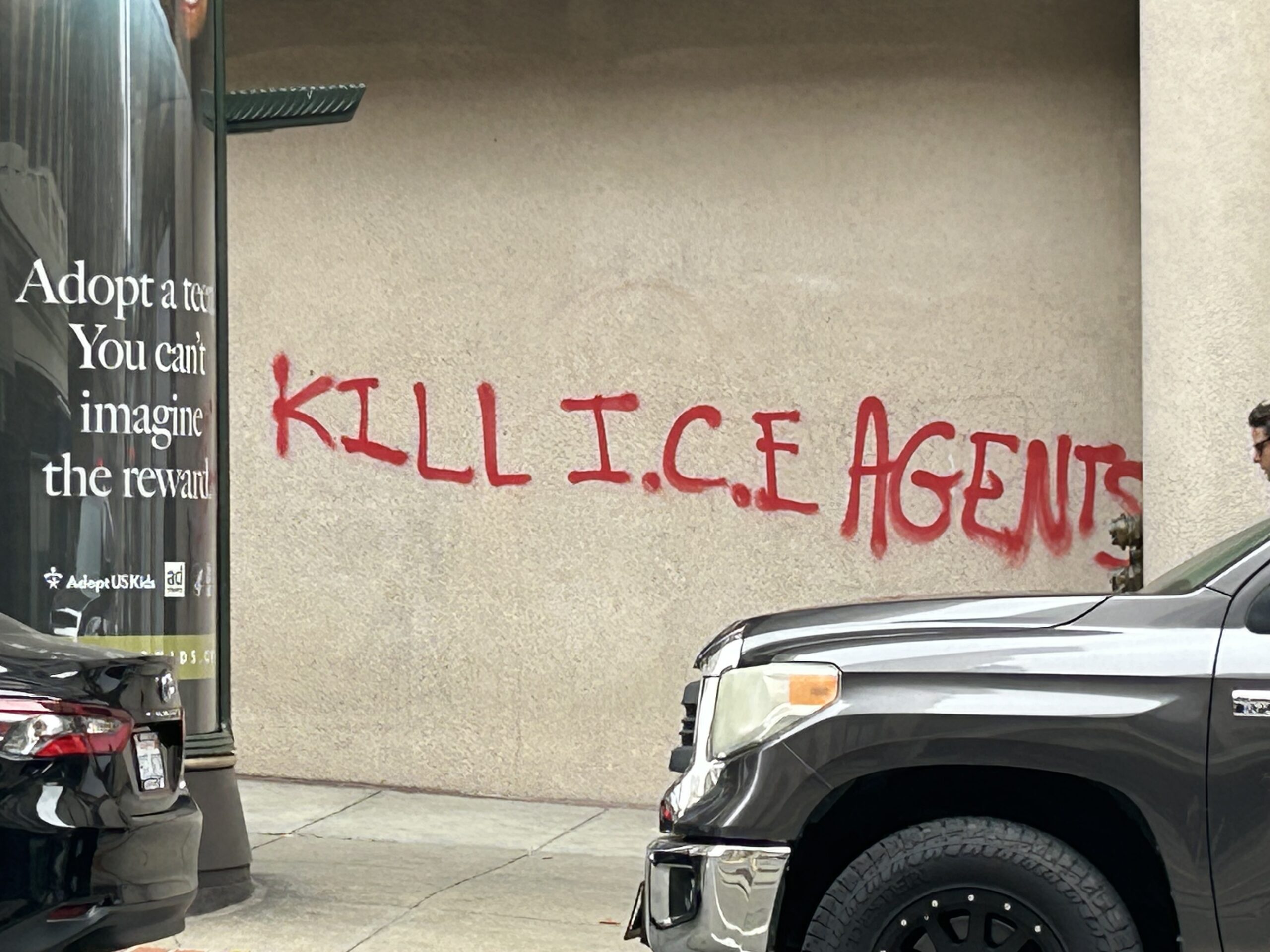News of the fairly small federal enforcement action spread quickly amongst opponents of immigration enforcement, and based on the flags and signs, a host of other political causes as well, resulting in days of riots, assaults on police officers, arson, and vandalism.
The situation is made more confusing in California because here, state and local law enforcement officials are barred from enforcing immigration laws or cooperating with immigration authorities by SB 54, the so-called “California Values Act”.
Specifically, SB 54 prohibits California peace officers from participating in joint federal/state task forces that involve immigration enforcement. They may not arrest individuals for immigration law violations or hold inmates longer than their customary arrest and holding periods without a judicial order for the purposes of immigration enforcement. They must also ensure that schools, hospitals, or other public spaces remain open to all without consideration of the immigration status of anyone accessing those facilities. In all they do, they cannot ask the immigration status of an individual.
ICE actions thus create a strain on the social contract between some Californians and local and state law enforcement agencies who are viewed by many to be indistinguishable from their federal counterparts. Consequently, in Los Angeles, local officers are being attacked and property is being destroyed as protestors and criminal opportunists take advantage of the misconception of their role.
In addition, the tactical response to an emerging riot can be maddeningly slow.
Consider that the Los Angeles Police Department has just 8,900 police officers on staff to provide service to over 3.8 million residents, yet the number of officers actually on duty at any given time is a scant 315, or less than 1 officer per 12,000 residents.
Even with assistance from other local law enforcement agencies and the CHP, it is a challenge for the police to quickly marshal the resources to quell an organized and large civil disturbance. Along with tactical considerations, the law leaves state and local peace officers in Los Angeles in a legal gray area when devising their strategies to maintain peace and manage crowd control while at the same time not being seen to be assisting ICE agents.
Another challenge is the fact that immigration law is administrative and not criminal. Consequently, officers engaged in enforcing those laws may find themselves in difficult legal circumstances were an enforcement action to turn violent or even deadly.
History has shown that the slow police ramp up during the three major LA riots (the 1965 Watts riots; the 1992 Rodney King riots and, most recently, the 2020 George Floyd riots) allowed a considerable amount of crime to take place before California’s governors utilized the California National Guard to assist in ending the riots and restoring order – a process known as “calling up.”
For that purpose and more, all US states and territories maintain a national guard, which in times of civil emergency can be called upon to assist local authorities. In some circumstances, the President of the United States can assume control of a state or territorial guard, such as when a state’s governor refuses to enforce federal law as famously happened in Alabama when President Kennedy nationalized the Alabama Guard based on Gov. George Wallace’s refusal to comply with the Civil Rights Act. Going back to 1954, President Eisenhower ordered elements of the 101st Airborne Division to protect the “Little Rock Nine” at Central High School in Arkansas.
This weekend, President Trump did the same when he ordered 2,000 California National Guard members to Los Angeles over the objections of Gov. Gavin Newsom, who said: “The federal government is taking over the California National Guard and deploying 2,000 soldiers in Los Angeles — not because there is a shortage of law enforcement, but because they want a spectacle.” On June 9, an additional 700 active duty Marines were sent to Los Angeles.
There appears to be ample evidence that, in the past, presidential authority to enforce federal law extends to ordering the US military and national guard to aid in carrying out law enforcement actions and the securing of facilities. California Attorney General Rob Bonta has filed a lawsuit challenging that authority alleging, among other things, the federalization deprives California of the guard in the event of an emergency and infringes on Newsom’s rights as Commander-in-Chief of the state guard.
Despite Gov. Newsom’s assurances that all was under control, there are a shortage of peace officers in Los Angeles and, for that matter, the rest of California. Los Angeles Police Chief Jim McDonnell reported after the first day of rioting that, “We are overwhelmed”.
It should be no surprise as the LA Times reported in January 2025 that LAPD was down hundreds of officers with little hope of returning to full staffing for several years. This situation is echoed by a recent peace officer staffing report by PORAC noting that statewide, law enforcement numbers are at a 30-year low.
There may be soon a day of reckoning in the Supreme Court not just over the extent of presidential authority vis a vis the use of troops to enforce laws but also over the constitutionality of state laws limiting cooperation with federal law enforcement authorities .
The question in Los Angeles today is that given these challenges, will the thin blue line hold?
Steve Smith is a senior fellow in urban studies at the Pacific Research Institute, focusing on California’s growing crime challenges.

